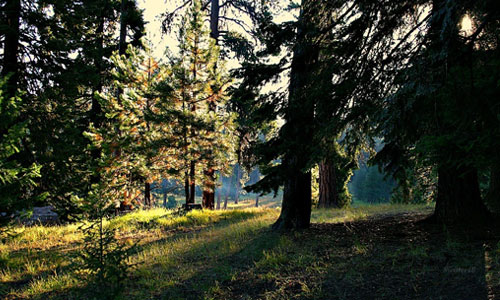Ever wondered why leaves change colour?
Aren’t we mesmerized to see the artist called “Nature”? It simply is an outstanding artist who knows all the intricate play of colours and shades. Just behold the colours of leaves and flowers, they are not only exquisite

but soul inspiring too. What makes them of a certain colour or how do they change their colours?
There is a science behind this art of nature. If you have ever been intrigued by the changes of the colour of the leaves and wanted to know the season, read on and you will find the answer to your question.
Remember Your Science Lessons at School
Most of us know from our school days that chlorophyll is responsible for providing green colour to the leaves. We have all studied the process of photosynthesis that helps in converting the sunlight into glucose by using carbon dioxide and water. But there are other lesser known pigments found in plants as well namely carotenoid and anthocyanin, which play their role in defining the colour of leaves.
After summers, the days become shorter resulting in the lower level of sunlight being received by the plants. As plants do not require chlorophyll in those times, they decrease its production. This is the time when Anthocyanin and Cartenoid take over and provide their primary colours to the plants. While Cartenoid also assists in photosynthesis when chlorophyll level drops and provides yellow and orange colour to the plants, anthocyanin provides a protective sunscreen to the plants and changes their colour to red during autumn season.
So, the next time when you take a walk in the garden near your home with your better half, enlighten each other with knowledge about the colour change of leaves. Your partner may love it or get bored by this extra information, but he/she will definitely appreciate your level of intelligence.
Pour Some Sugar on Me and See Me Change Colour
This is what the plants sing when the weather turns from sunny to rainy. With each falling drop of rain, they start producing sugar which makes them change color. To explain this phenomenon, let us go back to the school again. Well, you already know that anthocyanin provides the red color to leaves, what you don’t know is that the production of anthocyanin is boosted by the extra sugar production. Its increased production results in the reddening of the colour of the leaves. This change of colour only takes place in 10% of tree species.
Colour Change in Cloned Trees
If you have watched sci-fi movies, you might have some idea about genetically cloned humans. What you may not know is that it happens for real in trees and leads to colour change.
Aspen is a tree which reproduces by dropping shoots and suckers from their roots, which creates a group of genetically identical trees called a “clone.” With the arrival of autumn, the cloned tree changes its colour and it can only be differentiated from the parent tree by the colour of its leaves. The two similar trees standing side by side provide an amazing view to the spectators. If you have a park near home which has an Aspen tree, visit it with your loved and enjoy their beauty as they stand with different colors in harmony.
Categories
- Sport (4)
- Product Reviews (3)
- Team Outdoor Look (7)
- Mike Wild (2)
- Mike Payton (2)
- Suse Hammond-Pears (3)
- Snowboarding (11)
- Latest Offers (105)
- Shop Talk (1)
- Competitions (6)
- Walking (202)
- TEST (0)
- Lifestyle Fashion (4)
- Travel (18)
- Kit Guides (113)
- Workwear Clothing (6)
- Safety Workwear (4)
- Health/Fitness (110)
- Skiing (44)
- Great Outdoors (936)
- Cycling (42)
- May 2020
- April 2020
- March 2020
- February 2020
- January 2020
- December 2019
- November 2019
- October 2019
- September 2019
- August 2019
- July 2019
- June 2019
- May 2019
- April 2019
- March 2019
- February 2019
- January 2019
- December 2018
- November 2018
- October 2018
- September 2018
- August 2018
- July 2018
- June 2018
- May 2018
- April 2018
- March 2018
- February 2018
- January 2018
- December 2017
- November 2017
- October 2017
- September 2017
- August 2017
- July 2017
- June 2017
- May 2017
- April 2017
- March 2017
- February 2017
- January 2017
- December 2016
- November 2016
- October 2016
- September 2016
- August 2016
- July 2016
- June 2016
- May 2016
- April 2016
- March 2016
- February 2016
- January 2016
- December 2015
- November 2015
- October 2015
- September 2015
- August 2015
- July 2015
- June 2015
- May 2015
- April 2015
- March 2015
- February 2015
- January 2015
- December 2014
- November 2014
- October 2014
- September 2014
- August 2014
- July 2014
- June 2014
- May 2014
- April 2014
- March 2014
- February 2014
- January 2014
- December 2013
- November 2013
- October 2013
- September 2013
- August 2013
- July 2013
- June 2013
- May 2013
- April 2013
- March 2013
- February 2013
- January 2013
- December 2012
- November 2012
- October 2012
- September 2012
- August 2012
- July 2012
- June 2012
- May 2012
- April 2012
- March 2012
- February 2012
- January 2012
- December 2011
- November 2011
- October 2011
- September 2011
- August 2011
- May 2010
- April 2010
- March 2010
- February 2010
- January 2010
- November 2009
- October 2009
- September 2009
Submit a Comment